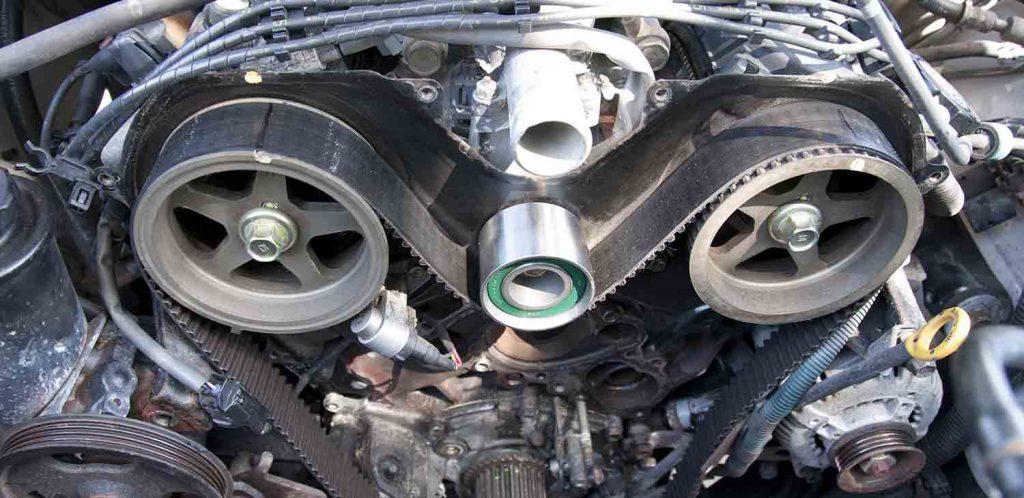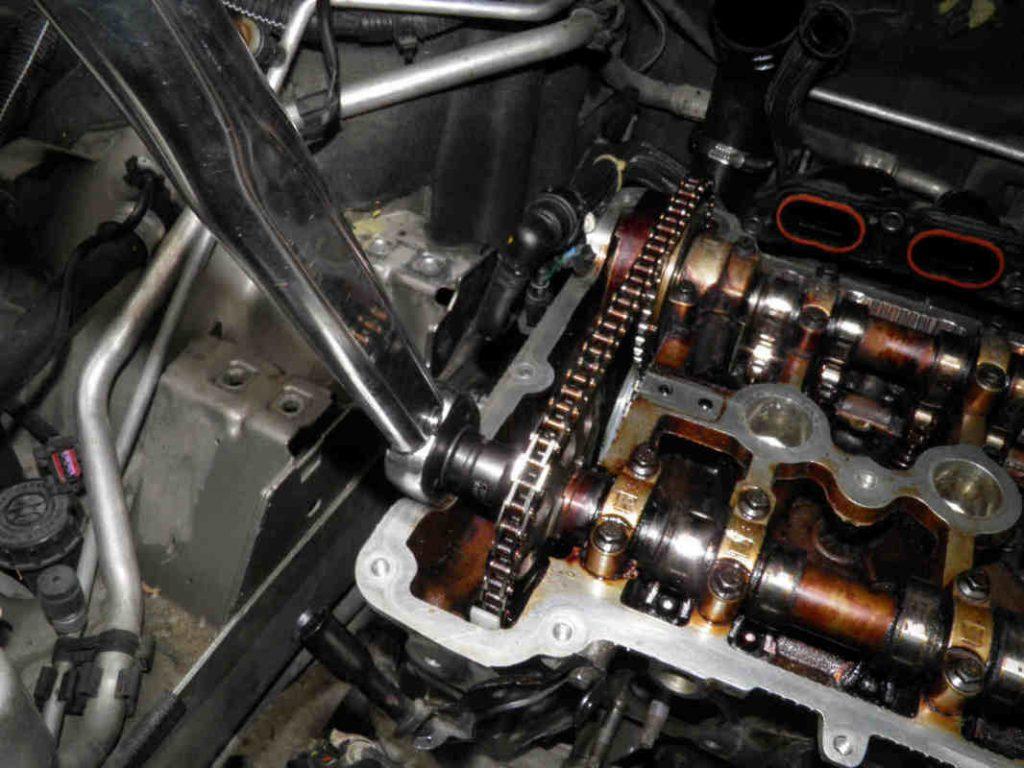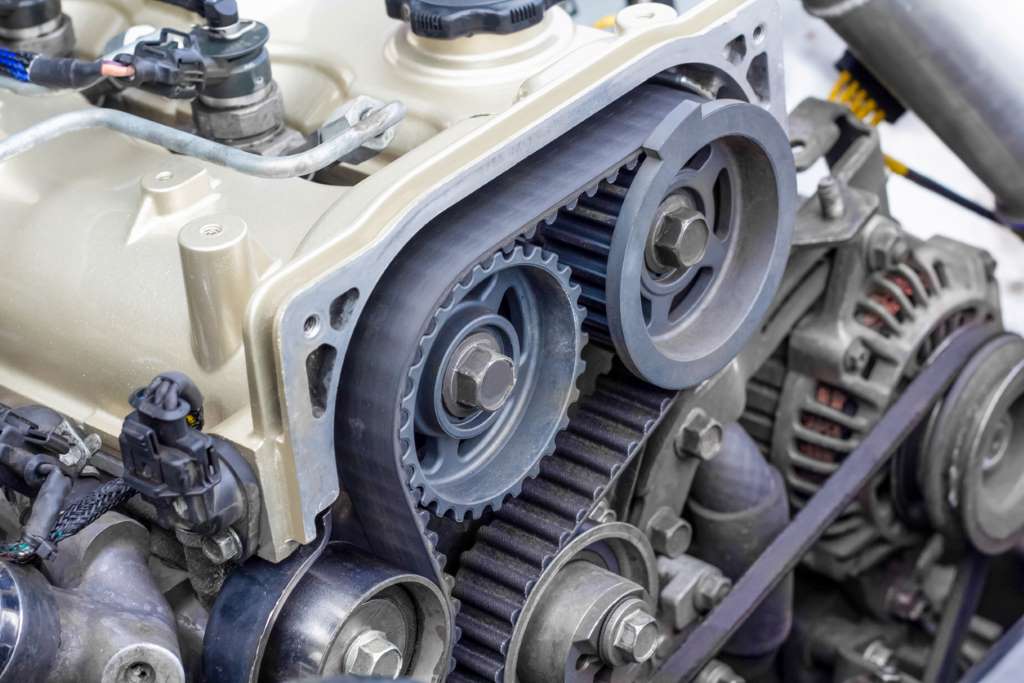Timing chains and Timing belts – Car owners often get confused between these two engine parts. Both carry out the function of coordinating the rotation of the camshaft and crankshaft so as to control the engine valves and timings.
However, there are some crucial differences that make one superior to the other. So, let’s explore the actual difference between – timing chain vs. timing belt and find out which one is better.
Contents
The Complete Comparison – Timing Chain vs. Timing Belt
It’s tough to answer this question, as both the timing chain and timing belt serve the same purpose in the vehicle. In spite of having the same job, each of them has some strengths and weaknesses that make them dissimilar.
So, let’s start drawing the complete difference in order to understand more about these two engine parts.
1. Timing Belt
One of the key innovations of the 1960s was the timing belt. Keeping in mind the complexity of a vehicle’s engine and the increased importance of cars in one’s life, this belt was invented.
It is a component of the internal combustion engines that coordinates the rotation between the camshaft and crankshaft.
This belt is assembled near hydraulic timing tensioners so that it maintains a balanced movement throughout the engine cycle and keeps the timing on the track.
A timing belt is prepared from rubber and contains fiber glass for durability. Therefore, it usually wears out with time.
When this belt rotates, it does not produce much sound and is pretty quiet. Most of the car manufacturers advise changing these timing belts after 60,000 miles.

2.Timing Chain
In contrast, a timing chain is a metal chain that unites the crankshaft and camshaft to make them revolving in-sync. One major advantage of using timing chain over belt is its long-lasting feature.
Luckily, these chains need not be replaced after some miles. They can last until the life of your car’s engine. In addition, they contain tensioners that help to keep them working accurately and prevent loosening.
Timing chains are tremendously dependent on the engine’s oil pressure. If the oil pressure is low or incoherent, it can affect the working of the chain and can impact the engine timings.
So, you can read some car maintenance tips to know how to fix these chains immediately. In contrast to timing belts, the timing chains are louder, heavier, and more ensuing when broken.
>> Find a second-hand car from Japan at best deals here <<

SEE MORE:
3. Why Is A Timing Belt More Preferred Than A Chain?
There are two main reasons for this underlying fact.
First, the production cost of a timing belt is far lower than that of a timing chain. As an obvious consequence, salability of a belted car is much higher than a chained car due to huge price differences.
This trend is particularly popular in the cheap cars market, where prices matter the most and the majority of buyers are ignorant of engineering and technical understanding of pros and cons of a belt vs a chain.
Commonly, customers in this niche in the car market care so little for what they really want from their engine compared to the main concern for their pocket. Therefore, manufacture of cars with belts is much more lucrative than those with chains.
Second, engines with a timing belt run with lower noise. Evidently, everyone loves a noiseless car but there is also a misconception of low noise for high quality and new condition of a car.
In the long term, a timing belt would not be up to expectations as it needs to be replaced for generally every 60,000 to 100,000 miles and five to seven years.
Though a belt is cheap to manufacture, it is costly for replacement due to the complicated technical process. Moreover, the water pump and tensioners are required to be substituted with the belt too, thus more parts and more labor.
Finally, other small reasons may be:
- Higher timing precision, leading to higher performance and lower gas emissions
- Reduced friction and lubrication requirement
- Rare belt failure causes far less damage to cars than chain failure

FAQs
1. How often do I need to replace a timing chain or timing belt?
Timing belts typically need replacement every 60,000 to 100,000 miles, depending on the manufacturer’s recommendations and the specific vehicle.
Timing chains, on the other hand, may not have a specified replacement interval and can last the lifetime of the engine with proper maintenance.
2. What are the consequences of a timing chain or timing belt failure?
If a timing belt fails, it can lead to catastrophic engine damage because the synchronization between the crankshaft and camshaft is lost.
Timing chain failure is less common, but it can also result in engine damage if not addressed promptly. In both cases, the engine may suffer valve and piston damage.
3. Can I visually inspect a timing chain or timing belt to determine if it needs replacement?
Timing chains are more challenging to inspect visually and often require disassembly to assess their condition.
Timing belts, on the other hand, can sometimes show visible signs of wear, such as cracks, fraying, or missing teeth, indicating the need for replacement.
4. Are there specific types of engines that use timing chains, and others that use timing belts?
There is no strict rule, but some manufacturers tend to use timing chains in larger, more heavy-duty engines, while timing belts are often found in smaller, less powerful engines.
However, this can vary, and it’s essential to consult the vehicle’s manual for precise information.
5. How much does it typically cost to replace a timing chain or timing belt?
The cost of replacement varies depending on the vehicle make and model, labor rates, and whether additional components like tensioners and pulleys need replacement.
Generally, timing chain replacement is more expensive than timing belt replacement due to the additional labor involved.
6. Can I switch from a timing belt to a timing chain or vice versa?
Converting from a timing belt to a timing chain or vice versa is a complex and costly modification that is not common.
It’s typically not recommended due to the significant engine and component changes required. It’s best to stick with the timing system your vehicle was designed for.
Check out the video from MotorWeek to see the difference between Timing belt and Timing chain in more details!
Conclusion
Finally, we have established the main differences between – timing chain vs. timing belt. Both of them have their strong and weak points. If you are fine with maintaining your vehicle properly, a timing belt is a better option.
But, for those who are not concerned with their car maintenance, they can probably stick to the timing chain. As for reasons why a time belt is more popular in cars are the low production cost and low operation noise.



